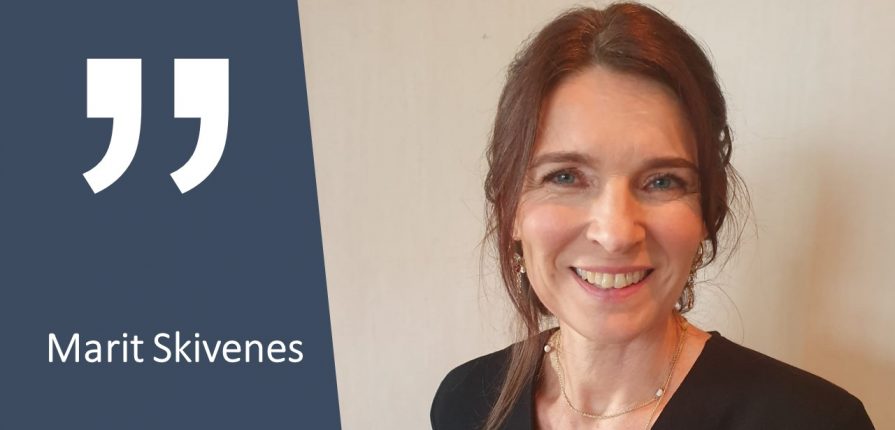BLOG: A study of seven European jurisdictions shows that overall, the child is not visible in the court’s justifications. Is this not a direct violation of the child´s right to justice?
Blogpost by Professor Marit Skivenes, Director of Centre for Research on Discretion and Paternalism.
If children in public care cannot be reunified safely with their birth parents, the government has an obligation to find alternative care. One option is to secure the child permanence through adoption. In the Convention on the Rights of the Child, Article 21, some of the key standards are laid out:
“States Parties that recognize and/or permit the system of adoption shall ensure that the best interests of the child shall be the paramount consideration and they shall: (a) Ensure that the adoption of a child is authorized only by competent authorities who determine, in accordance with applicable law and procedures and on the basis of all pertinent and reliable information, that the adoption is permissible in view of the child's status concerning parents, relatives and legal guardians and that, if required, the persons concerned have given their informed consent to the adoption on the basis of such counselling as may be necessary;”
Together with colleagues Postdoctoral Fellow Hege Stein Helland and Professor Katrin Kriz, I set out to examine 213 judgements about adoption from care in seven jurisdictions (Austria, England, Estonia, Finland, Germany, Norway and Spain).[1] We have asked how and whetherdecision-makers address children’s views and if children’s circumstances and individual uniqueness are clearly referred to in judgments when decision-makers justify decisions about adoption from care. We have studies all judgments for one (2016) or several years.[2]
Our starting point for studying written court decisions is the requirement in the European Convention of Human Rights, article 6(1), that judges and the courts must make their reasons for a decision public. Typically, this would take the form of written decisions, and thus these decisions should contain the relevant reasons and justifications for the adoption decisions – hereunder information about children’s circumstances and their uniqueness, children’s views when appropriate, and the weight these views were attributed by decision-makers.
Limited information about children’s needs
The overall finding from this study, as the title of the blogpost suggests, is that children in adoption proceedings are, to a large degree, invisible. Despite the child being the central person in these proceedings, only one-fifth were given a prominent place in the judgment. For example, there is little information in the adoption judgments about the children’s needs, their adjustment to a new family, and attachment to their birth relations. This is information that one would think was highly important when making decisions, and its absence, we think, is of great concern.
It is furthermore illustrative how the courts approach children that reasonable should be heard or at least have their competence and maturity considered. A total of 75 of the children in this study were five years or older. We would expect that each of these children would be heard and that it should be clearly presented in the judgments if they did not wish to be heard. Despite this expectation, only 37 children’s views were presented in the judgments.
There may of course be good reasons why the child’s opinion is not discussed in the judgments, for example, because of the child’s circumstances or because the child did not wish to share their opinion. However, absent these exceptions, the decision-makers should ensure that the child’s position and views on being heard are visible and make clear that they have been given due consideration.
Without doubt, the difficulty for decision-makers in child protection lies in determining what can be in the interest of another human – a child in cases of adoption from care – without being biased by prejudices, feelings, and preferences. However, this difficult and complex assessment of the evidence, interests and arguments involved cannot be accomplished without having knowledge and insight into the child’s unique experiences, needs and circumstances.
A general lack of a child perspective?
The ‘invisibility’ is a finding that echoes a cross-country analysis of removal proceedings in newborn cases (Križ, Krutzinna, Pösö & Skivenes, in press).[3] Put together, I wonder if an explanation for the invisibility in these types for child protection cases is a general lack of a child perspective when the judiciary makes decisions and justifies their choices.
Another explanation may, however, be that adoption from care are in these seven countries proceedings that have few accountability mechanisms in place – so few, in fact, that Burns and colleagues have labelled adoption from care ‘the hidden proceedings’.[4]
Although the findings about children’s visibility in judgments are disappointing, our analyses also demonstrate how some judgments effectively describe children, hear their opinion, and justify their decisions. This goes to show that it is possible that judgments can be extensively child-centric, and that decision-makers have a choice to expand on this matter.
[1] Helland, Kriz & Skivenes. Accepted for publication. Gauging the Child’s Presence and Voice in Adoption Proceedings of Children from Care in Seven European Countries: Applying a Child Equality Perspective, in Children’s Involvement in Adoption Decision-Making. Research Handbook on Adoption. An Edward Elgar Research Handbook in Family Law Series. Edited by Professor Nigel Lowe QC (Hon) and Dr Claire Fenton-Glynn.
[2] A detailed overview can be found at <https://discretion.uib.no/projects/supplementary-documentation/adoption-judgements/> accessed 14 February 2022.
[3] Križ, Krutzinna, Pösö & Skivenes. In press. The Invisible Child: A Comparative Study of Newborn Removal Judgements from a Child Equality Perspective (CEP). International Journal of Children’s Rights.
[4] Burns, Pösö & Skivenes. 2017. Child Welfare Removals by the State: A Cross-Country Analysis of Decision-Making Systems. New York, Oxford University Press.


